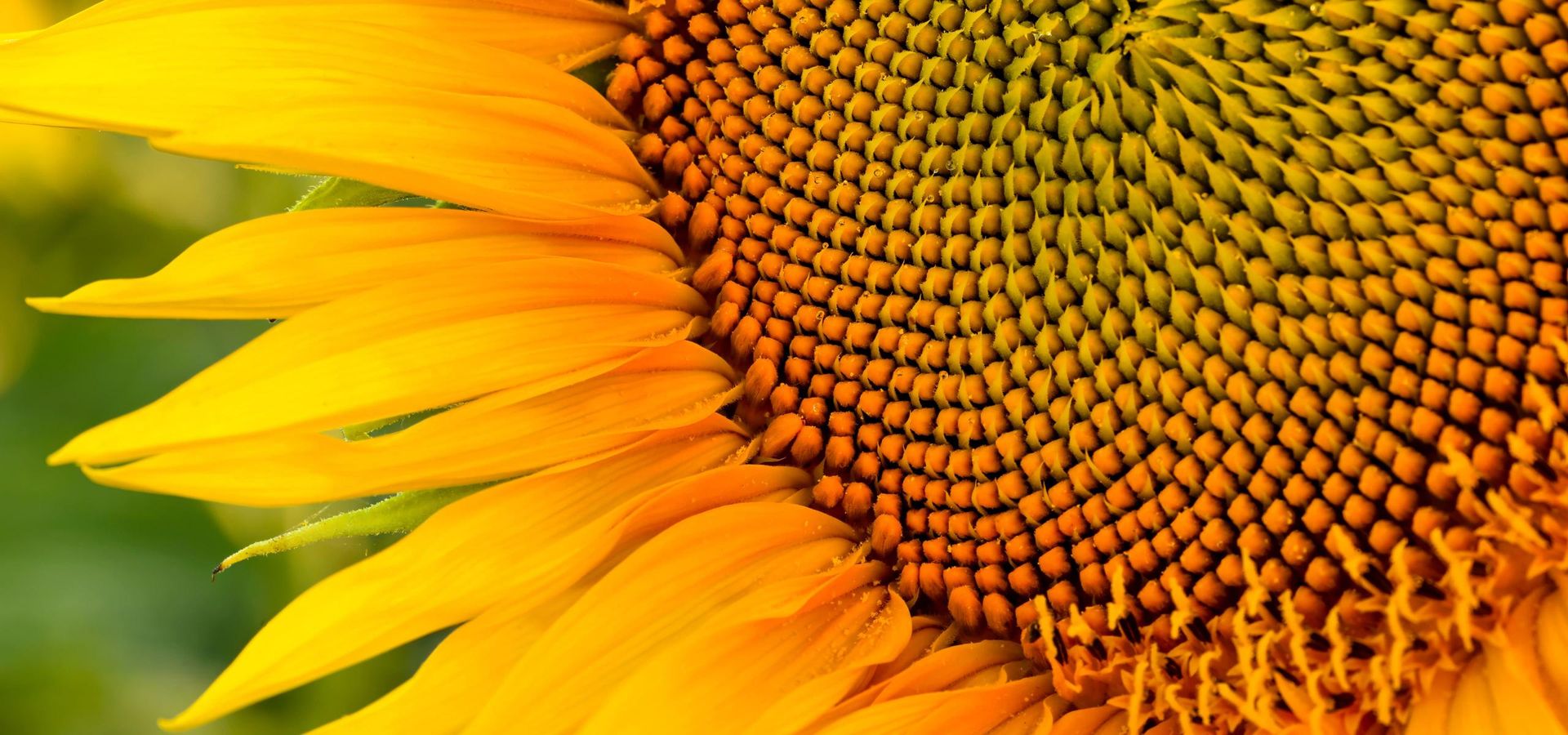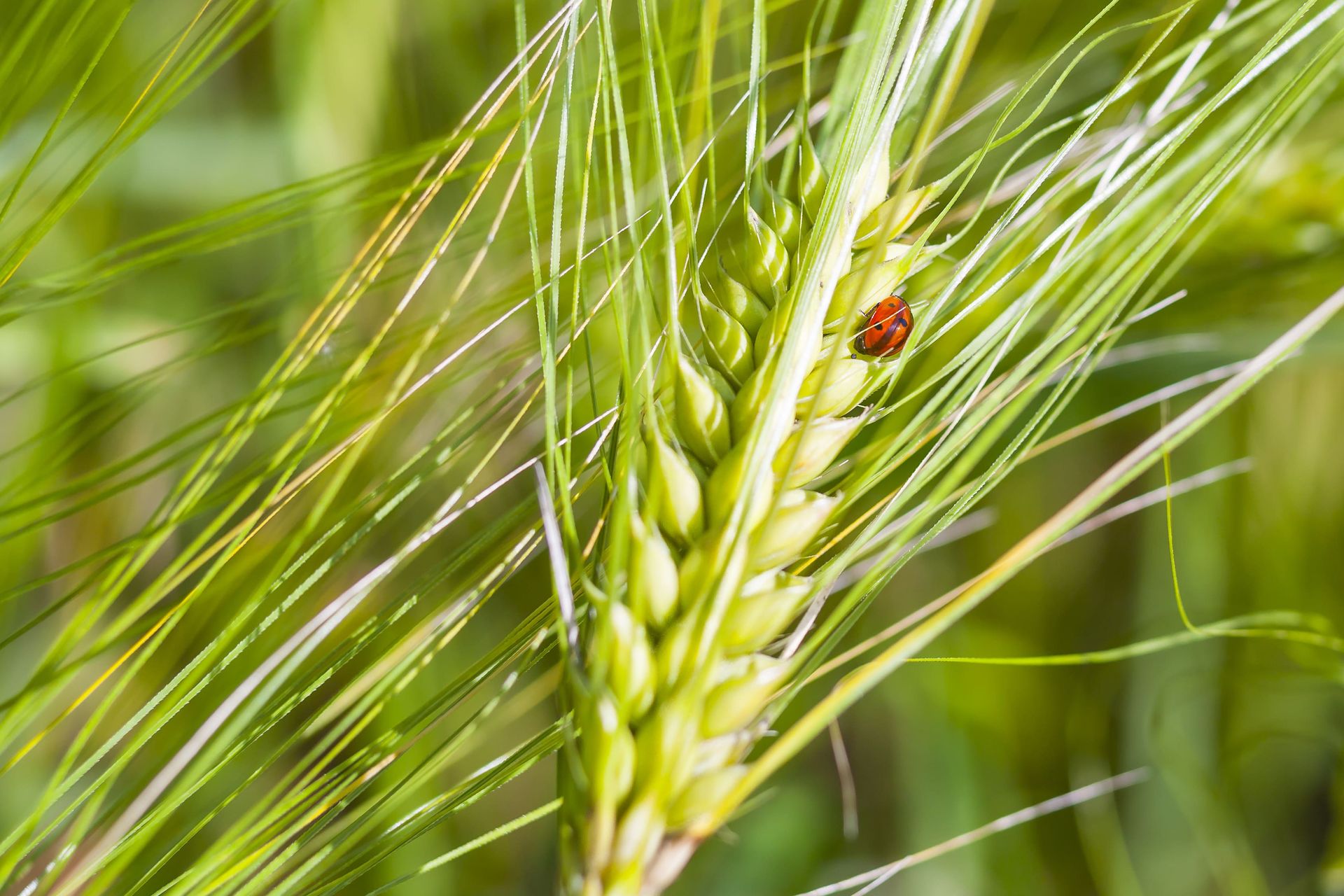
Machine learning in agriculture: applications, value & industry challenges addressed
October 31, 2025
- Home
- Machine learning
- Agriculture
Machine learning is a rapidly advancing technology with many potential applications in agriculture. Farmers and agricultural scientists are exploring how implementing machine learning solutions can improve crop yields, reduce water usage, and promote sustainable food production.
Machine learning in agriculture: a summary
Machine learning in agriculture refers to the use of advanced algorithms that analyze large volumes of data on weather patterns, crop and soil conditions, disease occurrence, irrigation practices, and more to support informed decision-making and automate routine agricultural processes.
With 5+ years of experience in machine learning development, Itransition helps agricultural companies to leverage ML-powered automation and intelligent decision-making for sustainable business growth.
Table of contents
Why machine learning in agriculture is important
The farming sector faces multiple risks and uncertainties due to changing climatic conditions and market trends, which results in significant production losses and wasted resources. While decades of experience coupled with ever-more precise weather data have helped farmers make educated guesses, there is still too much success variability.
Smallholder farmers own 470 out of 570 million farms worldwide. They don't have the requisite capital, lack the skills to use technology, or are unaware of the solutions available to help them farm better and drive profitability. More than 70% of farmers worldwide lack access to proper capital, two-thirds of them struggle to use technology and more than 50% are not aware of the existing solutions. We need to work together to educate, train and scale our efforts to deliver the benefits of digitalisation, AI, farm mechanization, and ML to farmers.
.png)
Dhruv Sawhney
Chief Operating Officer and Business Head at nurture.farm
ML in agriculture: market stats
the estimated CAGR of the ML in agriculture market from 2024 to 2030
Grand View Research
the annual cost of plant diseases to the global economy
FAO
the estimated global AgTech market size in 2025
Mordor Intelligence
Chart title: Smart agriculture market by value, 2018-2028
Data source: BlueWeave Consulting
13 ML use cases in agriculture
Here are some of the most powerful ways machine learning is transforming crop, soil, water, and livestock management in agriculture.
ML in agriculture
Crop management
- Yield prediction
- Disease detection
- Weed detection
- Crop recognition
- Grading by quality
- Selective breeding
Water management
- Irrigation
- Soil water monitoring
- Leak detection
- Weather monitoring
- Weather prediction
- Water usage prediction
Soil management
- Pesticides and fertilizers
- Fertility prediction
- Soil sensitivity
- Moisture prediction
- Organic carbon prediction
- Insect detection
Livestock management
- Animal welfare monitoring
- Precision livestock farming
- Monitoring production quality
- Monitoring living conditions
- Grazing control
- Disease detection
1 Weed control
Weeds spread rapidly, taking over crop territories, causing numerous plant diseases, and lowering yield. The most widespread way of dealing with weeds is herbicides. While this method is effective, farmers usually shower entire fields with herbicides, causing significant harm to the environment.
Computer vision-powered solutions can identify unwanted plants, allowing farmers to apply herbicides to selected areas rather than the whole field. This can drastically decrease the harmful effects of herbicides.
2 Disease detection
Crop diseases are one of the main threats in agriculture that drastically decreases yield quality and quantity. Traditionally, agronomists manually inspect fields and look for signs of crop diseases like curled leaves or wilting, which is time-consuming and error-prone.
ML-based image processing and analysis tools can assess the health of the soil and individual crops, limiting the application of pesticides only to sick plants instead of the whole field.
3 Yield prediction
Yield prediction is critical to the economy both in a global and regional sense. Knowledge of when it is best to harvest the crop and what crops to grow to satisfy market demands is crucial for any farm.
Many parameters can influence yield quantity, including environmental factors, phenotypic data, and weather information. Modern ML models can analyze all the factors to increase yield prediction accuracy.
4 Selective breeding
Traditional crop breeding embraces the principle of Mendelian inheritance, stating that one gene controls each trait. However, more recent research has shown that most traits are controlled by multiple genes, which interact with each other and the environment in complex ways. This means that traditional crop breeding methods are often inefficient and can take many generations to produce the desired results.
Machine learning solutions, on the other hand, can detect data patterns that are not apparent to humans, enabling faster identification of desired traits for breeding.
5 Irrigation
Using machine learning in agriculture helps streamline irrigation management and optimize water usage. By analyzing factors such as weather, soil properties, and crop types, ML algorithms can predict how much water crops need and when. These insights enable automatic adjustment of irrigation schedules, ensuring more efficient use of water resources.
6 Detecting leaks
In some parts of the world, water is an especially scarce resource. While drip irrigation and soilless systems can solve water shortage, their installation and consequential ROI don’t often make economic sense for small farms. By combining IoT devices, ML, and computer vision, it’s possible to detect irregularities and leaks in irrigation systems and rectify issues before they escalate.
7 Weather monitoring
Machine learning can be used to monitor weather conditions and provide insights for optimizing water usage. It is possible to analyze environmental conditions and predict how much irrigation should be applied and when by collecting data on precipitation, temperature, soil moisture levels, humidity, and wind speed and direction.
This way, farmers save time and resources by methodically watering their crops, reducing the risk of crop damage from drought or flooding.
8 Use of fertilizers
Fertilizers are an essential input in modern agriculture, and their efficient use is crucial for maximizing crop yields. However, applying the right amount of fertilizer to crops can be a challenge, as it depends on several factors such as weather conditions and soil type.
Machine learning software can analyze data from these various factors and predict how much fertilizer is needed for optimal results. This information can then be used to automatically adjust the amount of fertilizer applied to crops, saving farmers time and money.
9 Soil monitoring
Soil moisture is one of the most important factors in agricultural productivity. Too little water and crops will wilt and die; too much water and plants can become oversaturated, leading to root rot and other problems. Farmers have traditionally monitored soil moisture manually, using experience and intuition. However, this process is time-consuming and often inaccurate.
Machine learning algorithms can automatically monitor soil moisture levels. These algorithms analyze various factors, including weather data, plant type, and soil type. By constantly monitoring these factors, the algorithm can give farmers real-time recommendations about when to water their crops and how much water to use.
10 Insect detection
Insects can cause significant crop damage, and their early detection is critical for preventing extensive losses. Machine learning algorithms can automatically detect insects on images and thereby help farmers to more quickly and accurately identify infestations.
In addition, machine learning can analyze data from sensors placed in fields, which provide information on temperature, humidity, and other conditions that can affect insect activity. By understanding patterns of insect behavior, farmers can better target their pest control efforts and reduce the use of harmful pesticides.
11 Detecting animal diseases
In recent years, there has been a dramatic increase in the use of ML algorithms for anomaly detection and control of animal diseases. By continuously analyzing images and videos of animals with the help of computer vision, ML-based systems can assess animals’ health and behavior, allowing for the early identification of diseases and prevention of sickness spreading.
12 Tracking feeding
To ensure that animals are adequately fed, IoT- and ML-based tools can help monitor animals’ feeding habits. This information can be used to detect animals with anomalous nutrition patterns, which can be a sign of health problems. Farmers can also better understand how different types and volumes of food impact animals’ weight, metabolic efficiency, and production. Ultimately, ML can help farmers improve their methods and proactively respond to the needs of individual animals.
13 Grazing control
Overgrazing can lead to soil compaction and erosion, which can reduce infiltration rates and increase runoff. This can eventually lead to water pollution and the degradation of water quality.
ML-based tools can predict how various grazing scenarios will impact water resources. By analyzing many factors including land cover type, topography, rainfall patterns, and livestock density, farmers and ranchers can make more informed decisions about where and when to graze their animals.
Examples of ML in agriculture
Trace Genomics is a California-based startup focused on ML-enabled soil analysis. Instead of healing already damaged crops, Trace Genomics decided to get to the root cause of the problem and prevent crop nutrient deficiencies and common diseases by ensuring appropriate soil conditions. Large agricultural enterprises, small farmers, and everyone in between can send soil samples to Trace Genomics and receive a complete overview of soil conditions and actionable insights on soil management.
California-based company Blue River Technology tackles one of the most notorious problems in the agricultural sector – weeds. The company’s deep learning-driven robot See & Spray detects weeds and sprays herbicides. This way farmers significantly decrease environmental harm as herbicides are applied only on undesired vegetation rather than the entire field. Blue River Technology claims that farmers who use See & Spray decrease herbicides sprayed by 90%, reducing the damage to flora and fauna and saving farmers money. In 2017, John Deere, one of the largest manufacturers of agricultural machinery in the US, acquired See & Spray.
OneSoil is a Swiss-based startup that developed a free precision farming platform that monitors sown areas, streamlines farm operations, and increases farmer productivity. The company analyzes satellite imagery with proprietary ML algorithms to provide farmers with critical information about their fields. By using the OneSoil app, farmers can determine variable rates for nitrogen, phosphorus, and potassium, track field vegetation using the NDVI index, and analyze problem areas.
OneSoil Map provides insights on 13 crops and fields in 59 countries at both the field and regional level. Our technology and expertise enable farmers to innovate farming practices and take meaningful, data-driven action to safeguard food supply. It also allows us to estimate the scope of food security based on global events.
Morten Schmidt
CEO at OneSoil
Prospera is one of the world’s renowned agtech companies from Israel that harnesses artificial intelligence to detect pests and diseases, optimize irrigation, predict yields, streamline crop treatment, and make agricultural processes more efficient. Prospera’s solution is hardware-agnostic, meaning that the data can be sourced from pivots, drones, planes, mobile devices, satellites, or any other in-field machinery.

Looking for an experienced ML consultant?
Advanced ML technologies shaping the future of agriculture
Predictive analytics
Predictive analytics, a branch of data science, can be used in agriculture to help farmers forecast crop yields, anticipate demand for specific crops, and optimize irrigation and fertilizer use. By analyzing historical data sources, predictive analytics solutions provide insights that support informed decisions on planting, crop care, and pricing. They can also identify early warning signs of pests and diseases, allowing farmers to take preventive measures and avoid or mitigate potential damage.
Computer vision
Computer vision can be used to identify objects, track movement, or measure properties. It has a wide range of applications in smart agriculture, from yield prediction and crop monitoring to precision irrigation and automated farm machinery. Monitoring crop health is one of the most important applications of computer vision in agriculture. By analyzing images of plants, farmers can detect early signs of disease or stress that are not visible to the naked eye. This information can be used for planning the application of pesticides or scheduling other corrective actions.
Deep learning
Deep learning, a subset of machine learning, uses neural networks to process vast and complex datasets. Deep learning algorithms learn from data in a way similar to humans, which allows them to make accurate predictions that are too complex for traditional machine learning algorithms. Deep learning can be used in smart farming to predict crop yields, identify pests and diseases, and optimize irrigation systems, as well as developing new varieties of crops that are more resilient to climate change.
Supporting technologies enhancing modern farming
Internet of Things
By processing real-time data from IoT devices on soil moisture, air temperature, and crop health with machine learning systems, farmers can identify patterns and generate predictions that help optimize farming operations. The combination of ML-powered software and IoT in agriculture allows for more precise control over irrigation, fertilization, and pest management, reducing resource waste and improving crop yields.
Drones
By using drones, farmers can quickly gather data about their crops, including information on plant health, water levels, and nutrient levels. Additionally, these remote sensing platforms can help apply pesticides and herbicides, saving time and money compared to traditional methods.
Chatbots
Chatbots are widely used to automate customer service and sales tasks. In agriculture, they can also serve as a convenient interface for accessing information about crop or livestock conditions. Additionally, AI-powered chatbots can provide farmers with guidance on irrigation and fertilization, as well as support financial planning and management activities.
Robots
Agricultural robots are used in smart farming to perform tasks such as crop monitoring, planting, and harvesting. These robots, which can be operated remotely or function autonomously, can also apply pesticides and herbicides and irrigate crops.
Machine learning models used in agriculture
Regression
Regression models can predict crop yields, the price of agricultural commodities, supply chain fluctuations, and the demand for agricultural products. In addition, regression models can be used to study the impact of new technologies on agriculture and to evaluate the efficiency of different agricultural production planning systems.
Clustering
Clustering models can be used in agriculture to group plants with similar characteristics. This can be useful for identifying which plants are more likely to thrive in certain conditions and developing targeted interventions.
Bayesian models
Bayesian models can provide accurate crop yield predictions by using data on weather, soil conditions, and other factors. Farmers can use this data to decide what crops to plant, how much fertilizer to use, and when to harvest.
Artificial neural networks
Neural networks are well-suited for agricultural applications because they can learn to identify patterns in data that are too complex for humans to discern. For example, artificial neural networks can be used to develop new strains of crops that are more resistant to pests or diseases.
Transform your business operations with a tailored machine-learning solution
Benefits of machine learning for agriculture
Mitigating environmental risks
Machine learning helps farmers optimize their irrigation schedules, fertilizer application rates, and pesticide use to reduce wastage and environmental harm.
Saving time & labor
ML automates field mapping, crop health monitoring, and fertilization, which can save farmers time and money as well as minimize reliance on hired labor.
Improving yields
ML-powered decision-support systems provide farmers with actionable recommendations for optimal irrigation, fertilization, pest management, and planting scheduling, which results in increased crop productivity, minimized losses, and enhanced food security.
Reducing costs
ML helps farmers save money by optimizing the management of resources such as water, fertilizers, and pesticides, ensuring they are used efficiently and only when needed to maximize crop yields while minimizing waste.
Improving decision making
Relying on machine learning systems, farmers can make better decisions about when to plant, how to irrigate, and when to apply fertilizers.
Enhancing safety
By automating hazardous tasks, such as monitoring the application of harmful pesticides, machine learning reduces farmers’ exposure to toxic chemicals, enhancing the safety and health of agricultural workers.
Providing personalized advice
Machine learning systems generate tailored recommendations for planting, irrigation, and fertilization, enabling farmers to make more informed and efficient decisions.
Building resilience to climate change
Through the analysis of weather and environmental data, machine learning software enables farmers to adapt their practices to shifting climate conditions and ensure their operational resilience.
Protecting biodiversity
ML helps farmers manage their land in a way that conserves biodiversity. This can safeguard ecosystem services and preserve natural resources.
Improving food quality
By improving crop monitoring and quality control, ML contributes to producing safer, high-quality food, benefiting both public health and farmers’ profitability.
Solving key agricultural challenges using ML techniques
Challenge
Solution
Low yields
By analyzing environment and crop data, machine learning software can help farmers identify optimal planting and irrigation schedules, as well as predict ideal conditions for crop growth.
Pest & disease outbreaks
When integrated into early warning systems, machine learning can alert farmers to potential pest and disease outbreaks.
Soil degradation
Machine learning can help farmers identify areas of degradation and map out management plans to improve soil health.
Water scarcity
Machine learning enables more efficient irrigation scheduling and helps locate alternative water sources to ensure water sustainability.
Climate change
By identifying optimal growing conditions and powering early warning systems for extreme weather events, machine learning software helps farmers adapt to changing environmental conditions.

Stay ahead of the competition with ML
Artificial intelligence has the potential to significantly improve the agricultural industry by reducing environmental harm, improving yields and food quality, and making processes more efficient. Implementing machine learning in agricultural processes is crucial for staying ahead of the competition. Those who can adopt these technologies will be well-positioned to reap the benefits. At Itransition, we are committed to helping our clients stay at the forefront of innovation by providing expertise in cutting-edge technologies like machine learning and IoT. Contact us today to learn how we can help you improve your agricultural operations.

FAQs
What are the most popular machine learning applications in agriculture?
ML is used in agriculture to help farmers more accurately predict crop yields, optimize irrigation systems, and choose the most efficient agricultural production strategies. In recent years, machine learning algorithms have been used to develop new ways to identify pests and diseases and to map crops more accurately.
What is the ML process?
The ML process is a data-driven approach to finding patterns in data that can be used to make predictions. The process starts with collecting data, cleaning and preparing it for analysis. Next, various ML algorithms are applied to the data in order to find patterns. Finally, the results of the analysis are used to make predictions.
What does IoT stand for in agriculture?
IoT stands for Internet of Things, the growing network of physical objects connected to the internet. It includes everything from farm equipment to sensors to animals. In agriculture, IoT devices can track data and optimize production.
What is precision agriculture & how do ML & AI contribute to it?
Precision agriculture is the concept of using data analysis and different technology advancements to maximize crop yields, optimize resource management, and reduce environmental impact. Machine learning and artificial intelligence technologies become enablers of precision agriculture by processing vast amounts of data on soil conditions, weather, and crop health, collected from sensors, drones, and satellites. These digital agriculture technologies support real-time monitoring of crop health, pest or disease outbreaks, and soil conditions, allowing farmers to implement precise interventions such as targeted irrigation, fertilization, and pest management.

Service
Machine learning consulting services & solutions we deliver
Explore our range of machine learning consulting services, along with related technologies, use cases, implementation roadmap, and payoffs.

Service
ML services and solutions from certified machine learning experts
Get ML consulting and development services from machine learning experts. Proven expertise in artificial intelligence, machine learning, and data science.

Insights
Machine learning in manufacturing: key applications, examples & adoption guidelines
Learn how machine learning can help manufacturers to improve operational efficiency, discover real-life examples, and learn when and how to implement it.

Insights
AI in the automotive industry: use cases, success stories & adoption guidelines
Explore key use cases, payoffs, and real-life examples of AI in the automotive industry, along with common adoption challenges and tips to address them.
More about machine learning services
Services